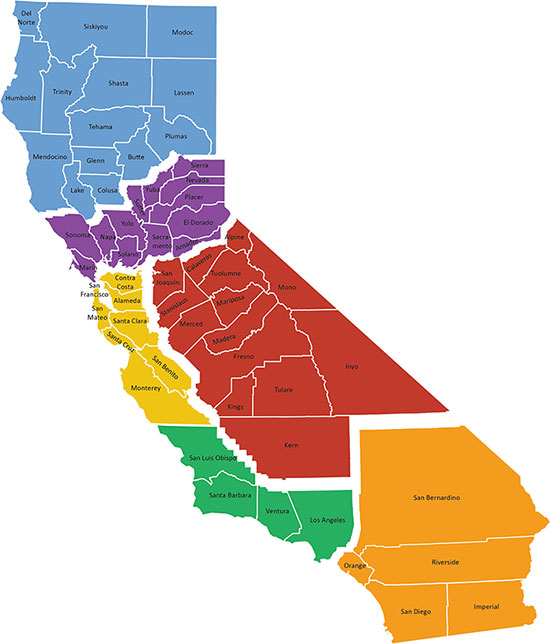Continuing my series (I now have four states up at Ricochet), the next state is Silicon Valley.
Unlike North California, Silicon Valley would be the new state with the most geographically misleading name. Shown in yellow on the map, it would encompass the current Silicon Valley in Santa Clara County, but it would also include all else on that peninsula, including San Francisco, and the East Bay all the way up to Oakland and Berkeley in Alameda County and the bedroom communities of Contra Costa County, all of which is quite densely populated. And beyond that, it would also extend south, all the way down into the Big Sur coast, to the southern Monterey County line. It would be the third largest of the new states, with a current population of almost seven million, like Arizona, Washington or Massachusetts.

It would have all of the industrial wealth of the existing Bay Area, with significant tourism, agriculture and ranching in Santa Cruz, San Benito, and Monterey Counties to the south. It would retain the ports and naval base of San Francisco Bay, in the city and in Alameda and Oakland. It would remain an economic powerhouse, and continuing attraction for visitors the world over. It would have its world-class universities in Palo Alto and Berkeley. The latter would probably become the University of Silicon Valley, with another campus in Santa Cruz, and San Jose State might become Silicon Valley State. San Jose would probably be a natural location for the capital.
Unlike the states to its north, Silicon Valley would probably produce more criminals than it could imprison with current facilities. Though San Quentin is not much further than a stone’s throw from San Francisco, it is across the border, in North California. The only significant penitentiary currently in what would become the new state is the prison in Soledad. So the state would either have to pony up money to build more prisons, or warehouse them in the other (very) nearby states. Like Jefferson and North California, Central California, just to the east, will probably have many more facilities than it needs. It will be an interesting battle between the prison-guards union, which will doubtless demand new in-state facilities, versus the taxpayers, particularly in the actual Silicon Valley (not the state), who would probably take a NIMBY attitude, and be happy to ship people off to existing facilities in other states at a huge savings.
But the new state would be lacking one other, even more crucial thing. It wouldn’t have much fresh water. The bay isn’t ocean salty, but it is brackish, and the region currently gets its water from what would become the new state of Central California. If accommodations cannot be worked out, it may be that some of the new state’s wealth will have to be diverted to building desalinization plants on the coast, or in the bays, where the job is easier (though removing water from them will result in an inflow through the Golden Gate that would increase salinity, affecting the local ecology). This will ultimately be needed anyway, even if California remains intact, if the population continues to grow, and rain and snow doesn’t commensurately increase. One way to pay for it would be to start fracking the Monterey shale, part of which underlies the southern portion of the new state, if the voters would allow it.
But would they? Those counties are currently dominated by Democrats, a little over fifty percent of the registered voters. Republican registration is less than twenty percent, with about a quarter of those registered having no affiliation. So even if a Republican could attract all of the unaffiliated, it would be almost impossible to pull off a win there without significant Democrat defections or low turnout. This will probably be made even worse by out-migration of Republicans and conservatives to new Californias where they will have more of a say in the voting booth, such as Jefferson, or Central or South California. Barring a major change of heart of its current populace, or a change of the population itself, this will be a reliably Democratic state, with a Democrat governor and two Democrat senators, and even fewer Republican representatives, proportionally, than the current state. But perhaps even so, the water issue could force them to come to terms with economic and energy reality.
Next, one of the most interesting of the new states, Central California. Or as I prefer to think of it, Nuevo Colorado.